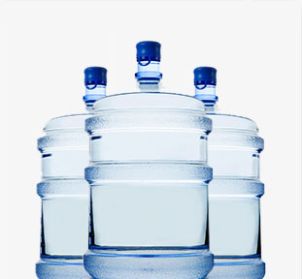
What To Know About PFAS in Sparkling Water

It may be surprising to hear, but some of your favorite beverages — particularly sparkling water — may contain PFAS, a group of substances known as “forever chemicals.” Two of the primary toxic chemicals of concern within this group are:
- Perfluorooctanoic acid (PFOA)
- Perfluorooctane sulfonic acid (PFOS)
Both are part of a man-made chemical group called per- and polyfluoroalkyl substances (PFAS). Recently announced regulations, water safety updates and other information have made it important to understand what these PFAS chemicals are and how they could end up in your drinks. This doesn’t just apply to sparkling water; your tap water could be impacted, too.
Here’s what to know about PFAS in sparkling water, carbonated water and other beverages.
Reports of PFAS in Sparkling Water
Consumer Reports (CR) is an organization that performs product reviews and investigative journalism. In late 2020, CR performed a sparkling water forever chemical test, analyzing 47 brands and 30 PFAS chemicals. The tests covered 30 PFAS chemicals. Here are some of the key takeaways from the Consumer Reports study:
Noncarbonated Beverages
CR noted that most of the tested noncarbonated products contained “detectable levels of PFAS chemicals,” but only two exceeded 1 part per trillion (ppt). For context, a measurement of 1 ppt means there’s one gallon of PFAS compounds in one trillion gallons of the beverage. (A new PFAS regulation announced by the U.S. Environmental Protection Agency (EPA) in April 2024 sets the standard for PFOA and PFOS in drinking water at 4 parts per trillion; along with limits for other select PFAS.)
The test included bottled water types such as:
- Spring water
- Alkaline water
- Purified water
- Artesian water
Carbonated Beverages
CR noted that many types of carbonated drinking water had “measurable amounts” of PFAS chemicals. In fact, most of the tested brands had total PFAS levels ranging from 1.1 to 9.76 ppt.
The test covered multiple carbonated beverage types, including:
- Sparkling mineral water
- Sparkling seltzer water
- Sparkling water with added flavor (lemon lime, blackberry, etc.)
The biggest takeaway from this Consumer Reports study is that you might want to look a little closer at your favorite bottled or sparkling water brand.
Are PFAS Chemicals in All Water?
Because PFAS chemicals are man-made, it might make sense to think that they’d only appear in store-bought beverages that have been bottled, canned or otherwise passed through manufacturing processes. Unfortunately, that’s not necessarily the case.
The first problem is that PFAS chemicals have been used since the 1940s. They’ve been used to produce goods in almost every category, from cosmetics and food packaging to specialized firefighting foam. Manufacturing and using these chemicals and the products they help create allows PFAS to migrate into air, soil and water.
This means two things:
- PFAS chemicals manufactured before the phase-out period remain present in the environment.
- New PFAS substances are still being added in various ways.
All these factors mean you can’t just explore whether there are forever chemicals in sparkling water. Instead, it’s necessary to consider that PFAS contamination could potentially impact your tap water, whether it’s sourced from the city or a private well. In fact, a July 2023 study by the United States Geological Survey found that at least 45% of U.S. tap water is estimated to contain one or more types of these chemicals.
Recent research indicates that even near-zero PFAS levels can negatively impact public health over time. That’s part of the reason why organizations such as the Environmental Protection Agency (EPA) are updating their approach to PFAS limits in drinking water.
Originally, the EPA provided only voluntary guidelines, suggesting maximum levels below 70 ppt. However, as referenced above, new studies have prompted a new drinking water regulation that would limit certain PFAS levels to 4 ppt. The rule was finalized in April 2024; however, drinking water systems have until 2029 to implement solutions if the required monitoring finds PFAS above the established limit . Once in place, the EPA says the rule could “prevent thousands of deaths and reduce tens of thousands of serious PFAS-attributable illnesses.”
As far as PFAS exposure goes, the Government of Canada is also taking a closer look. Health Canada has released a draft objective that says the summed total of all PFAS measured in drinking water should not exceed 30 nanograms per liter (ng/L). While the country hasn’t yet updated its own drinking water regulations, it agrees that “the lower the levels of PFAS present in the drinking water, the lower the risk of potential health effects.”
A Note on PFAS Regulations for Well Owners
Even with the EPA’s new rule, private well owners remain responsible for their own water quality. Although the updated regulations set enforceable PFAS levels and will notify the public when chemical levels go above this standard, remember that federal governments do not oversee private well water. You’ll still need to manage your own water testing and treatment.
Protecting Your Water Quality
Unfortunately, there’s a long list of things that won’t necessarily reduce or eliminate your PFAS exposure, including:
- Buying bottled water instead of using your tap water
- Boiling tap water
- Relying on standard fridge or pitcher filters
Instead, your best bet is to take control of your home’s water supply through testing and treatment.
Water Treatment
While some at-home, DIY water tests might claim to give you all the right information on PFAS chemicals in water, the reality is that even the EPA is still developing methods to accurately identify PFAS levels below a certain threshold. The organization maintains a list of laboratories currently approved to analyze samples for PFAS substances.
Although you may not be able to get all the details on these chemicals just yet, you can still get peace of mind around this issue through filtration solutions equipped to handle PFAS chemicals and their potential negative impacts on public health. Certain types of reverse osmosis systems, a type of filtration that uses a specialized semipermeable membrane, are certified to effectively reduce the presence of PFAS substances in drinking water.
The key is to choose a solution certified to NSF/ANSI 53 and/or NSF/ANSI 58 standards. These guidelines indicate that a particular system effectively reduces certain PFAS levels to at least 70 ppt.
Culligan’s Aquasential® Smart Reverse Osmosis Drinking Water System checks all these boxes when configured with the Total Defense or Total Defense+ Mineral Cartridge cartridge. This comprehensive filtration system doesn’t just help address PFAS levels; it also handles dozens more contaminants including lead, mercury and arsenic.
Know What’s In Your Water
Whether you’re concerned about PFAS or other potential contaminants in your drinking water, it’s always a good idea to learn more about your water quality through water testing. This isn’t just a great way to learn about your tap water and get personalized recommendations for filtration and softening solutions. It’s also a chance to ensure you can trust your home’s drinking water. After all, as the same Consumer Reports findings indicated, even bottled water can contain contaminants such as arsenic — so it’s always smart to know what’s going in your glass.
Have you noticed symptoms of problem water?
Try our free Water Solutions Finder.
Although the conversation around “forever chemical” exposure and limitation is ongoing, you don’t have to wait for the new EPA rules to go into effect to take control of your water quality. Start with water testing to learn about potential problems and contaminants. Your local Culligan specialist can offer testing for PFAS and other potential issues. Then, let your local water expert recommend a solution that can address your PFAS concerns and much more.
Get started today by scheduling your free, in-home consultation.
*Contaminants may not be present in your water.
Related Articles
FAQ: Are There PFAS in Bottled Water?
8 min read
What is PFAS Water Testing?
11 min read
PFAS Regulations in the U.S.
15 min read
Find A Location Near Me

Schedule Your Free
In-Home Water Test
Get better water in your home by scheduling an appointment with your local Culligan Water Expert.
Discover More
See All Articles

FAQ: Are There PFAS in Bottled Water?
Although drinking water quality has always been important, it’s a particularly hot topic these days — especially as researchers learn more about PFAS, sometimes called “forever chemicals.” These substances have […]
8 min read

Explore

Explore
Our Products

Water Softeners
With any of our soft water systems, get more out of your water-using appliances while spending less on energy and detergent.
View Products

Water Delivery
There’s never been a better time to enjoy the convenience of scheduled bottled water deliveries from the Culligan® Water Experts
View Products

Water Filtration Systems
Culligan's water filtration systems have improved water quality for thousands of families worldwide.
View Products
